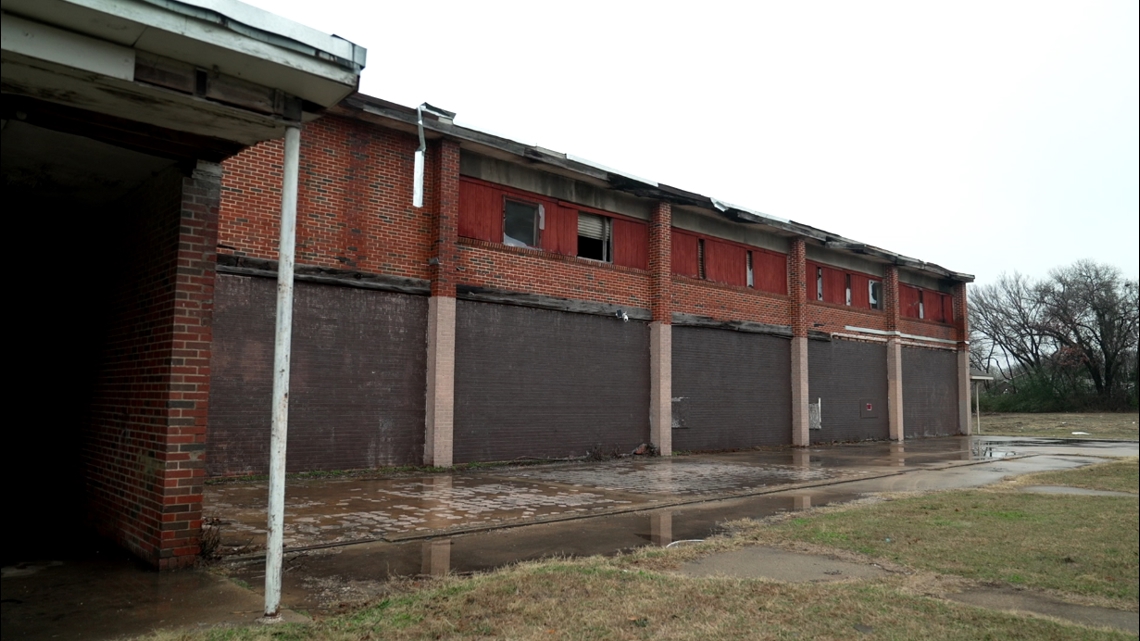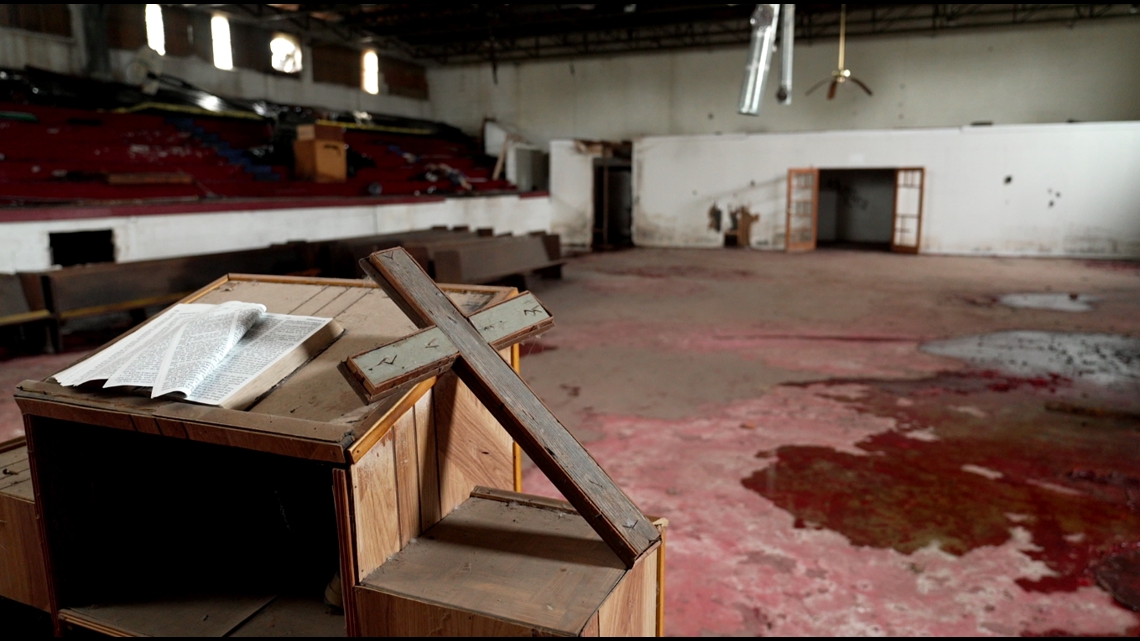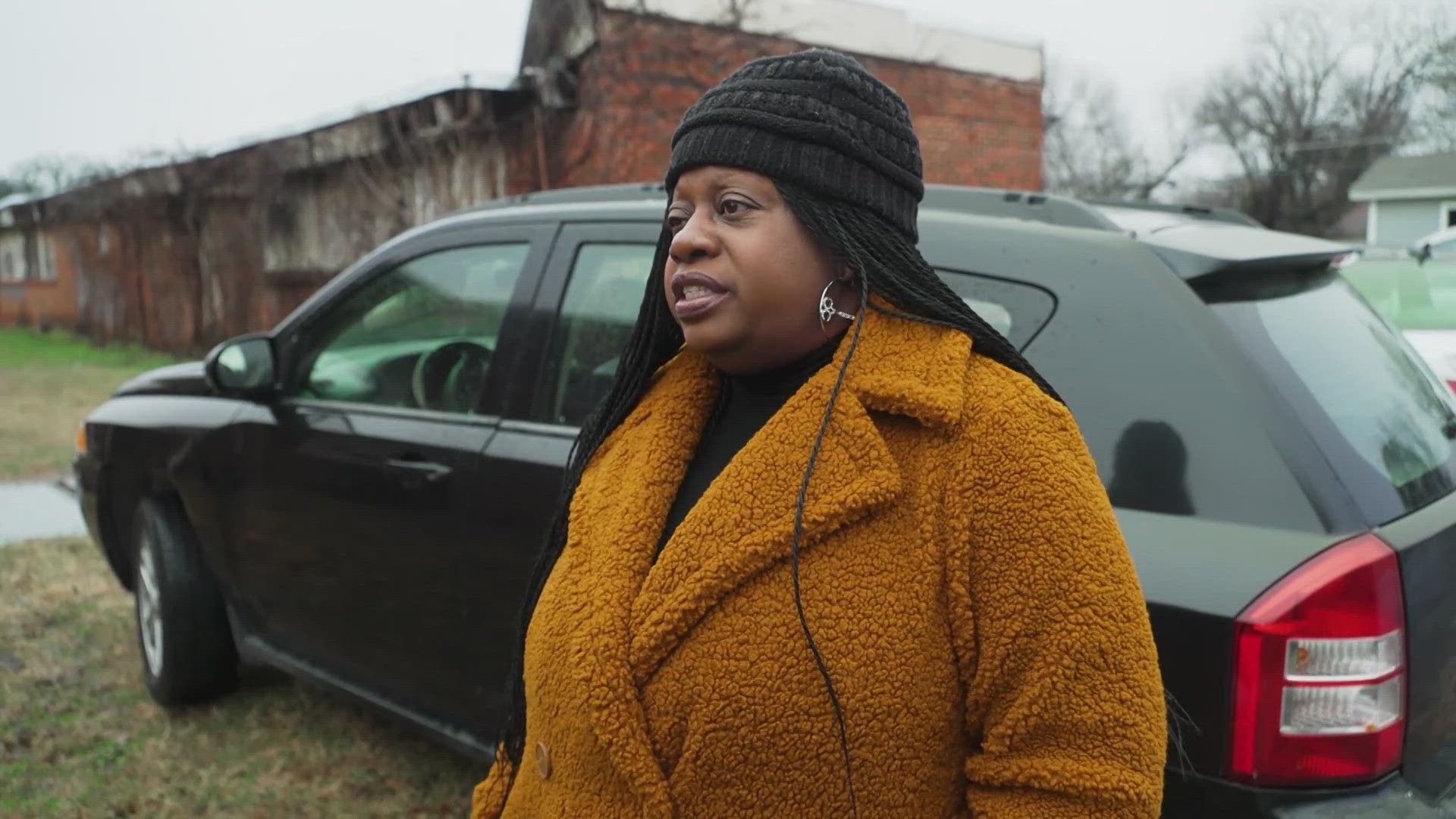JOPPA, Texas — September 7, 1954, the halls at Melissa Pierce School stood empty as they are today. Then, students at the all-Black school in Dallas’s southeast neighborhood of Joppa joined the NAACP to advocate for integration.
It was just four months after the Supreme Court declared separate was not equal, but newspaper clippings from that time, said the Texas Education Agency “ruled that segregation will continue” that year.




“I was actually born in this community. I’m fourth of five generations,” said Shalondria Galimore, Melissa Pierce Project Founder/CEO.
Her parents attended the school which became a church in the 1970’s. For more than a decade now, it has sat vacant. “It’s extremely frustrating especially when you go to other parts of the City of Dallas and you don’t see this,” said Galimore when she pointed to the streets and sidewalks. They are crumbling too.


Joppa is what SMU professor, Barbara Minsker, calls an infrastructure desert. WFAA first told you about infrastructure deserts in March as Minsker walked through Jubilee Park in South Dallas.
“There’s a community center over here, but there’s no crosswalk. So, you have to walk all the way down,” said Minsker. “There’s a real story there of these low-income neighborhoods with highly deficient infrastructure relative to other neighborhoods.”
Her study used data from 2018 to 2019 to identify 12 types of infrastructure deserts such as food access, sidewalks and gathering places. “At that time, there was 62 infrastructure deserts around the city,” said Minsker.
Most of the infrastructure deserts are in southern and western Dallas.
“You know it when you see it. Right? You see this neighborhood. You can see that its infrastructure has not been cared for or kept up or maybe isn’t there in the first place,” said Minsker.
That is similar to Joppa. “It’s extremely frustrating for the ones that were here, were fighting before me,” said Galimore. “They got it in a bond package, but yet, 20, 30 years later, we still don’t know what happened to that money.”
“We should not have these problems persist as long as they have,” said Carolyn King Arnold, Dallas Councilmember District 4.
King Arnold said city council has put infrastructure needs high on their list passing a $1.2 billion bond package for the special bond election.
“It’s now time for the lenses that we look through day to day to be cleaned off and we see where we have an opportunity to be equitable in terms of what we see for this city,” said King Arnold. “If Dallas is to be what we want it to be, we must have investments from the community.”
That is why Galimore along with architect, Agustin Mauro, have been working to turn the former Pierce School into a multi-purpose center. It is a process designers call adaptive reuse.
“In the architecture and urban planning world,” said Mauro, HKS and Design Professional. “People are starting to pay attention to this idea of the 15-minute city, which is basically offering all the neighborhoods of a city all the needs that they need within the radius of a 15-minute walk.”
The center would fill the need for a gathering place.
“If you’re reusing the infrastructure desert or let’s just say this vacant building, for example, for something that this specific community needs, then you’re just empowering the community itself,” said Mauro.
“The child of a former slave donated the land for this building,” said Galimore.
It is a power that fought for integration as the next generation continues their fight for change.
“People still want to dream. Like I said, there are decades of families and generations that are still here. They just want to see it happen,” said Galimore.

